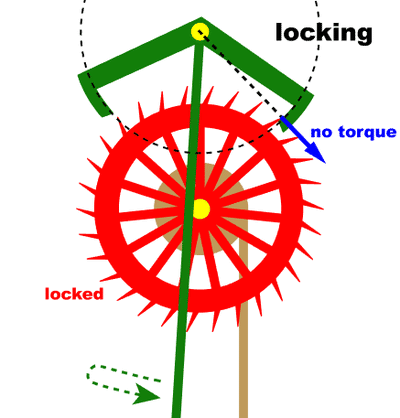The escapement is one of history’s greatest inventions; it enables a collection of wood or metal to tell time. The animation below illustrates a pendulum clock’s deadbeat escapement, apparently introduced by Richard Townseley, Thomas Tompion, and George Graham in the late 1600s and early 1700s. The escapement wheel transfers energy to the pendulum to overcome frictional damping while periodically stopping (and escaping) to count the number of oscillations.

Swinging pendulum (green) periodically locks escape wheel (red) interrupting fall of weight (brown) as escape well periodically nudges pendulum to compensate for frictional damping
The swinging pendulum (green) extends below each frame; a length of one meter provides a swing of about one second (and a period of about two seconds). The pallets attached to the pendulum periodically engage the teeth of the escape wheel (red) in two ways: near the extremes of the pendulum’s swings, the teeth hit the pallets’ curved faces concentric with the pendulum pivot with a torque-less “dead beat” and the wheel locks; near the pendulum’s equilibrium, the teeth hit the pallets’ angled faces clockwise or counter-clockwise to keep the pendulum swinging and the wheel rotates. The energy comes from a falling mass connected to the escape wheel by a rope (brown). This precision ballet provides the ticktock of mechanical clocks and watches.


